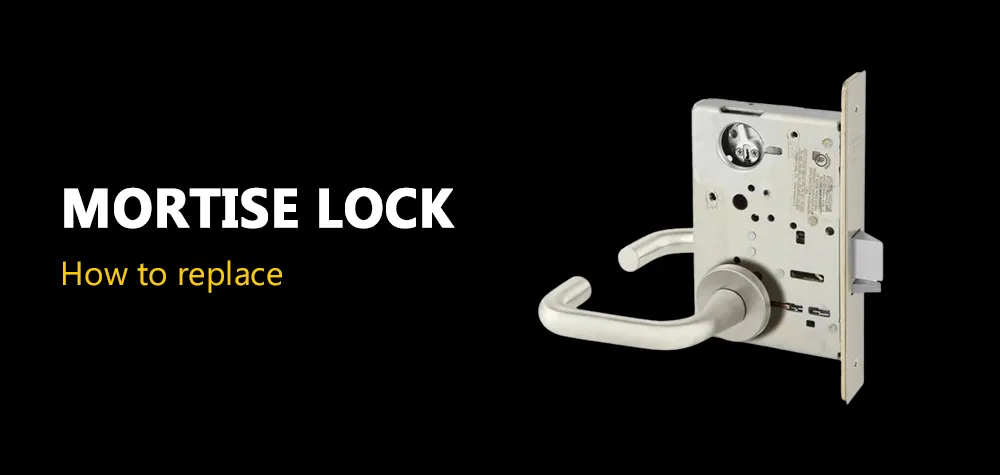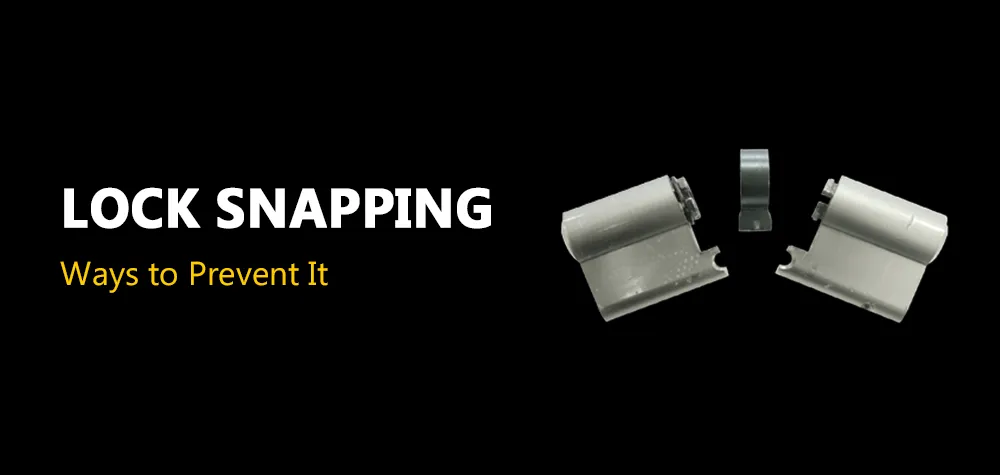Lubricate Lock Easy Steps to Follow
Call Us Any Time!
24/7 Residential, Commercial & Automotive Locksmith Services
UNLOCKING SMOOTH OPERATION: THE ULTIMATE GUIDE TO LUBRICATING YOUR LOCKS
Properly lubricating a lock is essential for its longevity and smooth operation. Over time, locks can accumulate dirt, debris, and rust, leading to difficulty in turning the key or even causing the lock to jam. By regularly lubricating your locks, you can prevent these issues and ensure that your locks function effectively for years to come.
In this guide, we'll explore the step-by-step process of lubricating a lock, including the materials you'll need and the best techniques to use. Whether you're maintaining locks on your home, office, or vehicle, these simple tips will help you keep them in top condition.
Teflon Dry Lubricant
Teflon dry lubricant is a versatile and effective solution for enhancing the performance of locks. Composed of polytetrafluoroethylene (PTFE), Teflon provides a dry, non-stick coating that reduces friction and prevents the accumulation of dirt and debris. Its unique formula ensures smooth key-turning and extends the life of your locks by minimizing wear and tear.
Ideal for both indoor and outdoor applications, Teflon dry lubricant repels moisture, preventing rust and corrosion. Easy to apply and long-lasting, this lubricant is a reliable choice for maintaining the functionality and security of your locks, offering a superior level of protection and performance.
Teflon Aerosol Lubricant
Teflon Aerosol Lubricant is a highly effective and convenient solution for various lubrication needs. Infused with polytetrafluoroethylene (PTFE), this aerosol spray provides a slick, dry film that reduces friction and enhances the performance of mechanical components.
Its versatile application extends to locks, hinges, gears, and other moving parts, ensuring smooth operation and preventing wear. The aerosol delivery mechanism allows for easy and precise application, reaching tight spaces with minimal effort. With excellent resistance to moisture and corrosion, Teflon Aerosol Lubricant is a reliable choice for maintaining and protecting a wide range of equipment, promoting durability and long-term functionality.
Powdered Dry Graphite
Powdered Dry Graphite is a high-performance lubricant renowned for its versatility and effectiveness in reducing friction. Composed of fine graphite particles, this dry powder is an excellent choice for various applications, including locks, hinges, and other mechanical components.
Its unique dry formula ensures a mess-free application while providing a long-lasting, low-friction coating. Powdered Dry Graphite excels in extreme temperatures and harsh environments, making it ideal for both indoor and outdoor use. By forming a protective layer, it minimizes wear and tear, enhances equipment longevity, and ensures consistent, smooth operation. This reliable and efficient lubricant is a go-to solution for those seeking durable and effective friction reduction.
Graphited Lock Fluid
Graphited Lock Fluid is a specialized lubricant designed to optimize the performance of locks and associated mechanisms. Infused with graphite particles, this fluid offers superior lubrication, reducing friction for seamless key-turning and preventing lock-related issues.
Its unique formulation ensures lasting protection against rust and corrosion, making it an ideal choice for both indoor and outdoor applications. The fluid's easy applicability and precision ensure thorough coverage, even in hard-to-reach areas, promoting extended lock life and reliability. Graphited Lock Fluid is a go-to solution for those seeking an efficient and long-lasting lubricant to maintain the smooth functioning of their locks.
Pencil
WD-40 Specialist Lubricant is a highly effective solution for various mechanical and industrial applications. Specially formulated to withstand extreme conditions, this lubricant provides superior protection against friction, rust, and corrosion. Whether used on hinges, gears, chains, or other moving parts, the WD-40 Specialist Lubricant ensures smooth operation and extends the lifespan of equipment.
The formula's versatility makes it suitable for both indoor and outdoor use. With its precision application nozzle, it reaches tight spaces with ease. Trusted by professionals and DIY enthusiasts alike, WD-40 Specialist Lubricant is a reliable choice for maintaining and optimizing the performance of a wide range of machinery and tools.
WD-40 Specialist Lubricant
WD-40 Specialist Lubricant is a highly effective solution for various mechanical and industrial applications. Specially formulated to withstand extreme conditions, this lubricant provides superior protection against friction, rust, and corrosion. Whether used on hinges, gears, chains, or other moving parts, the WD-40 Specialist Lubricant ensures smooth operation and extends the lifespan of equipment.
The formula's versatility makes it suitable for both indoor and outdoor use. With its precision application nozzle, it reaches tight spaces with ease. Trusted by professionals and DIY enthusiasts alike, WD-40 Specialist Lubricant is a reliable choice for maintaining and optimizing the performance of a wide range of machinery and tools.
De-Icer and Lubricant
De-Icer and Lubricant is a dual-purpose solution designed to tackle icy conditions while providing effective lubrication. Combining the power to melt ice and frost with the benefits of a high-quality lubricant, this product is a versatile choice for winter maintenance.
The de-icing component rapidly clears frozen surfaces, such as locks and hinges, ensuring easy access in cold weather. Simultaneously, the lubricant minimizes friction, preventing potential damage caused by icy conditions. With its convenient spray application, De-Icer and Lubricant is a practical and efficient solution for safeguarding against freezing and ensuring smooth operation of various mechanisms during winter months.
Non-Toxic Mineral-Based Lubricant
The Non-Toxic Mineral-Based Lubricant is a cutting-edge solution prioritizing environmental safety and performance. Formulated with mineral-based ingredients, this lubricant offers an eco-friendly alternative without compromising efficiency. Ideal for various applications, from household items to industrial machinery, it reduces friction, ensuring smooth operation while maintaining a commitment to non-toxicity.
Free from harmful chemicals, this lubricant is safe for users and the environment. Its versatile nature makes it suitable for both indoor and outdoor use, providing a reliable and sustainable choice for those seeking effective lubrication without compromising on health or ecological considerations.
Synthetic Oil With Syncolon
Synthetic Oil with Syncolon is an advanced lubricant engineered for superior performance in diverse applications. Infused with Syncolon, a unique synthetic compound, this oil offers unparalleled friction reduction and long-lasting protection. Its synthetic formulation ensures stability under extreme temperatures, making it ideal for industrial machinery, automotive components, and household tools.
The lubricant's exceptional film strength minimizes wear, corrosion, and oxidation, promoting the longevity of mechanical parts. Whether used in precision instruments or heavy-duty equipment, Synthetic Oil with Syncolon provides reliable lubrication, demonstrating a commitment to optimal performance, durability, and efficiency in various operational environments.
Proprietary Lubricant
Proprietary Lubricant is a specialized and exclusive lubricating solution designed for specific applications. Formulated with a unique blend of ingredients, this lubricant offers targeted benefits, ensuring optimal performance and protection for particular machinery or mechanisms.
With its proprietary formula, this lubricant is often tailored to meet specific industry needs, providing enhanced efficiency and durability. Whether applied to automotive components, industrial machinery, or precision instruments, the proprietary nature of this lubricant underscores a commitment to innovation and superior performance, making it a trusted choice for those seeking precision lubrication solutions tailored to their specific requirements.
-
What makes Proprietary Lubricant unique?
Proprietary Lubricant stands out due to its exclusive blend of ingredients, specifically formulated for targeted applications. The unique composition ensures optimal performance and protection, catering to specific industry needs.
-
Can Proprietary Lubricant be used in various environments?
While designed for specific applications, the versatility of Proprietary Lubricant depends on its formulation. Some variants may be suitable for diverse environments, while others are tailored for specific conditions. Always check product specifications for compatibility.
-
Is Proprietary Lubricant environmentally friendly?
The environmental impact varies depending on the formulation. Many proprietary lubricants prioritize eco-friendliness, utilizing advanced technologies to reduce harmful effects. It's advisable to review the product details or contact the manufacturer for information on the specific lubricant's environmental attributes.



All Rights Reserved | BROTHERSLOCKSMITH.COM
Privacy Policy






